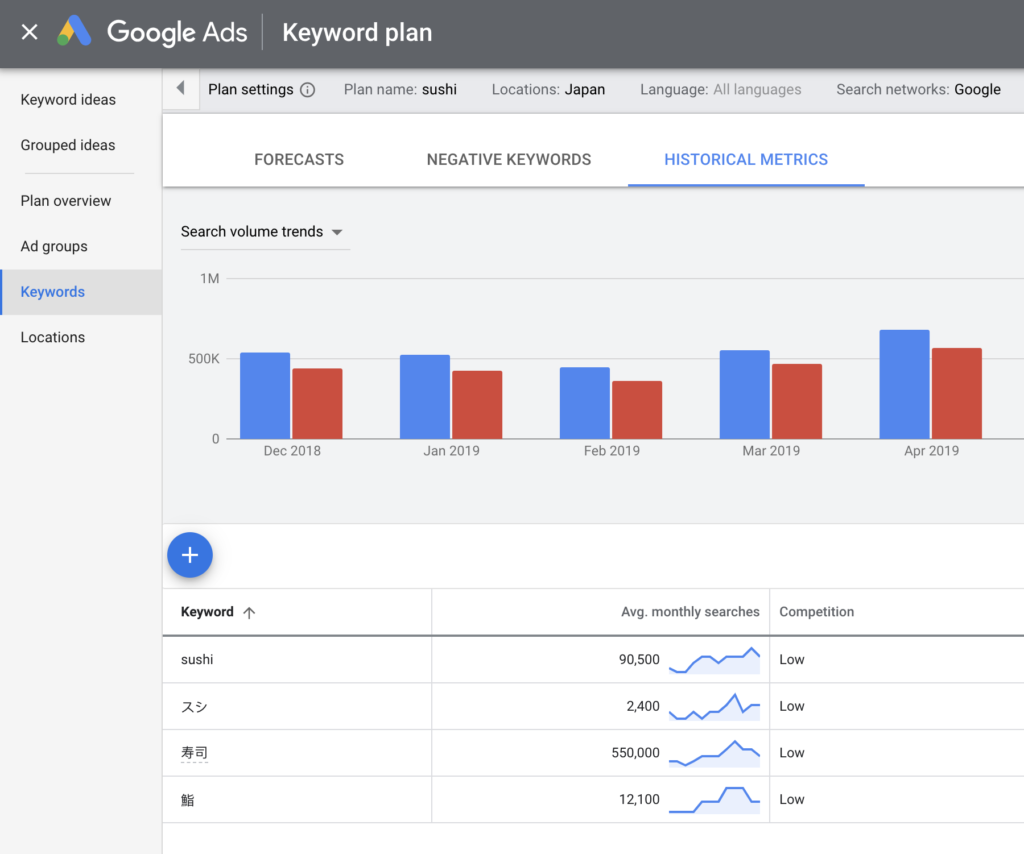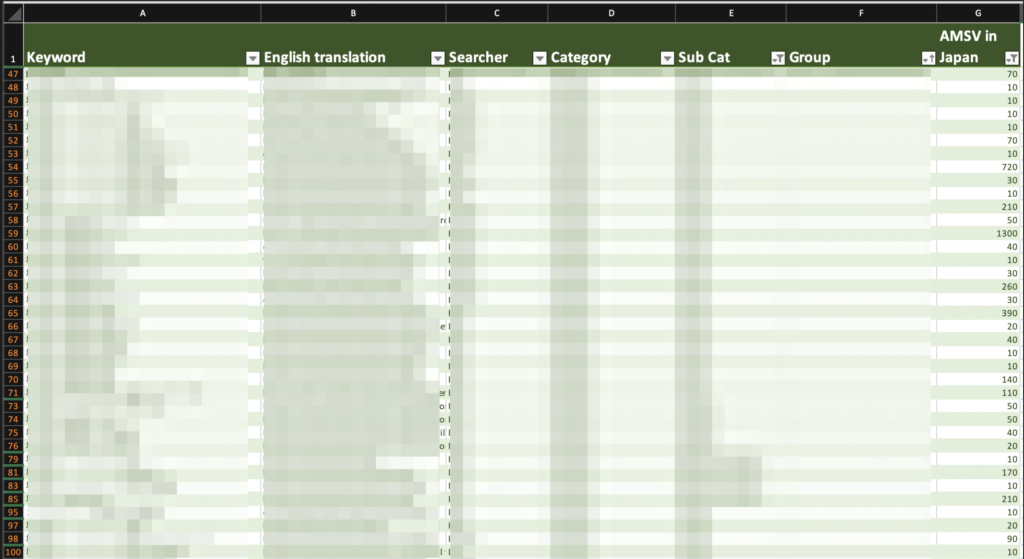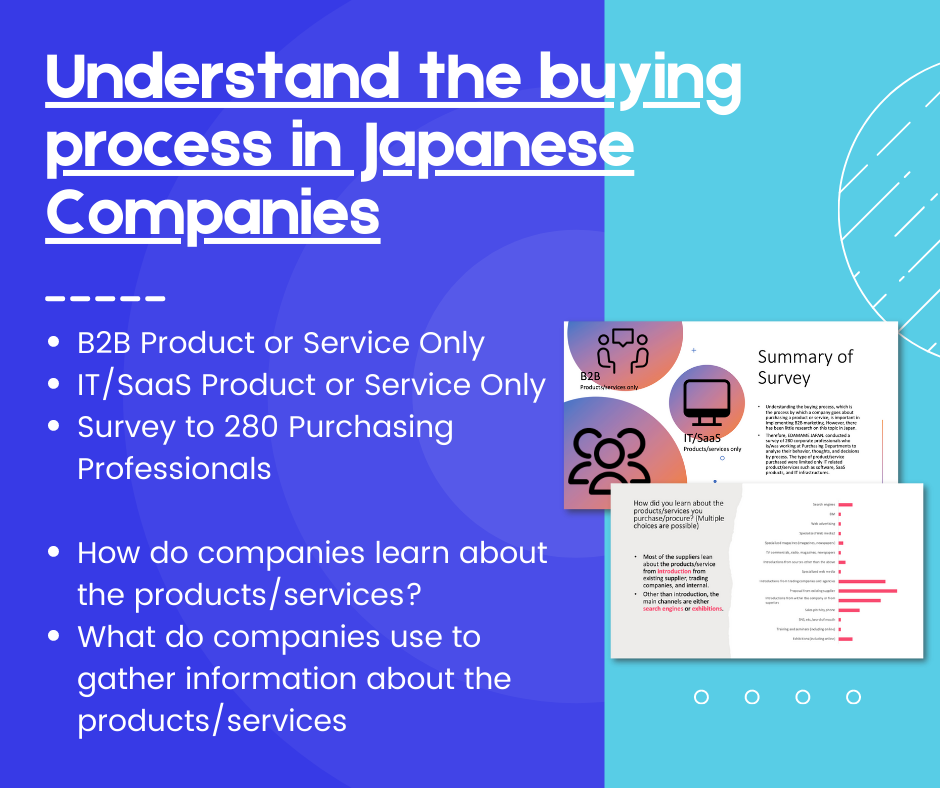How Keyword Research in Japan had done in 3 steps: Case Study

The keyword research in Japan is not simple and often complicated. The simple translation of keywords can only do so much, without proper keyword research.
This article will explain the appropriate Japanese keyword research technique using various tools such as Google Keyword Planner and how to create content to display and access by using the keyword at the top of the search engine.
Failure of relying on the direct translation for keywords research in Japan
The client was one of the international pharmaceutical companies who wanted to set up a new daily health information portal site to expand its brand awareness to the general public as well as health care professionals (HCP).
They had a successful English version of the portal site already, so they simply translate all the contents into Japanese by hiring a professional translator.
However, even after the months, there is very little traffic to their website.
The difficulty of keyword research in Japanese
It is difficult for the non-Japanese to find the exact keywords to use in a search. Now there are some useful tools such as Google Translate, and even a simple translation can be done without any cost or even the professional translators.
However, the fact that the local people often use it is a different wording from the parallel translation that he looked up.
There are also cases where search methods are used in Japan, which are not often done in other countries.
It is also important to note that the common search method in English has slightly different nuances in Japan.
For example, in English, it is often said that “Best ~” for products, but in Japanese “Best” is not often used in the phrase, rather “Ranking of ~” was used.
Also in English, the direct translation of “Best Deal” is “good” or “profitable” by machine translation, but in Japan, the term “激安” (very cheap) is often used for such kind of promotion.
For other examples, please also see our article about Japanese SEO.

3 steps of Keyword Reseach in Japan
Here are 4 steps we have taken to generate SEO optimized keywords in Japanese for the above client.
- Discovery
- Refine
- Categorize
1. Discovery
From English Seed Keywords
The first step in keyword research efforts is to list broad and general keywords related to the client’s website. If they already have a seed keyword in English or have already completed keyword research, scrutinize the list and expand your keywords from there in Japanese.
If you’re working on keyword research for your company’s site, the keywords are frequently the topics and topics you post. If it’s a commercial page SEO, consider the target. Find out what topics your target audience is looking for, how they are finding your website right now, which keywords are driving the most conversions, Google Analytics and Google Search Console, Or you can check it from there if you have a listing.
Once the topics are listed (usually 5-10 per seed keywords), the next step is to list all possible keywords, that will actually be used if someone searches your website. The point is not to consider every possible possibility, but to gain clues for the research that will follow.
In these steps, tools like Google Keyword Planner, and other paid tools like SEMRush or Ahref were used to generate keywords.
From the competitor website in Japan
It is also important and valuable to look at the potential competitors’ website to general keywords. You don’t have to target every keyword that your competitors use (because your audience may be a little different), but you’ll want to know which keywords are ranked higher on your competitors, and how to target those keywords It is useful to know if you are.
Google Keyword Planner or Ahref is a great competitive research tool even in Japan that is very useful. Research on either keywords or domains to get a better idea of how difficult your competitors are doing, as well as how well your competitors are doing. When doing keyword research, enter your target keywords and see the top 10 organic search keywords on the Organic Keywords tab.
Also, it is worth to enter a keyword and see what kind of pages are listed in the Japanese Google search. Check out the landing pages at the top of the search results to see how your pages are optimizing your keywords. The focus is on title tags and page content to see where and how keywords are used on these pages.
From online forums for keyword research in Japan
Not only the existing English seed keywords and keywords used by competitors but also online forums as shown below, where active discussions and questions can help you find keywords that your rivals do not know.
Wikipedia: A treasure trove of keywords. By researching Wikipedia topics related to the content theme, you can find unexpected keywords.
Forums: Forum thread pages related to your theme are raw keywords used by potential customers.
Hatena Bookmark: Investigate search results for your theme on Japan’s largest blog network. Since the Hatena Bookmark is highly current, you can find keywords that are likely to increase the number of searches in the future.
Q&A Sites: Japanese version of Quora, sites such as Yahoo! Chiebukuro, and OKWave can help you research keywords and phrases used by potential customers. A great place to look for information keywords.

2. Refine
So far, we’ve spent a lot of time and effort trying to list the keywords we want to target, but now we’ll narrow down the size of the list. To do so, you need to determine how much traffic the keyword can generate, whether it is easy (or difficult) to rank your search, and what your users are trying to find in that search query. Keyword selection is mainly based on the following criteria.
Search volume
Optimizing your site for a keyword doesn’t make sense if no one is searching on that keyword. Fortunately, there is an easy way to check which of the large list of keywords has enough traffic to be effective.
The keyword Japanese search volume in Japan tends to be lower than that in English. All items with an average of 10 or more times a month are raised, and even if the important keywords are 0, they are listed.
Competitiveness / Difficulty
It is not enough to consider only the entire search volume. Search terms like “Cancer” can have hundreds of thousands (actually 110,000) of searches per month, but it’s almost impossible to rank high in these big words unless you’re a big company.
Long-tail keywords have a low search volume (perhaps tens of times a month), but overall account for 70% of all Google searches. The great thing about long-tail keywords is that they tend to rank well and tend to convert well.
Use the Google AdWords Keyword Planner and Bing webmaster tools again to see if your keywords are competitive/difficult. The Keyword Planner uses CPC data, so it doesn’t have a direct connection to organic search metrics, but can get close enough. Bing Keyword Research is strictly organic search data.
Search intent
Determining your keyword search intent is important in determining which keywords to target. If you’re an e-commerce site, you want to make sure your visitors are willing to buy products, while blogs are more likely to target users in the first phase of the conversion funnel and targeted audience.
3. Categorize
By categorizing, navigation such as breadcrumbs to indicate the category structure is required, and by providing the navigation content, the site structure (hierarchical structure) that is easy for search engines and users to recognize is improved. It improves its own performance and can expect SEO effects.
However, it is not possible to expect the SEO effect up to that point simply by categorizing the category with the category name decided on your own, or simply classifying similar pages into categories.
If the category is already determined in English, we will classify it accordingly.
Categories divided by theme
Considering the theme of the entire site, and increasing the content while digging into detailed content, content with similar themes will increase. When you divide content, you categorize the content by considering the intent of the user who wants to read the content.
Categories divided by search users
We will also categorize each type of search user. In the case of Pharma’s portal site this time, it is necessary to divide the general patients (or those who are in trouble) into keywords for each of the two categories of HCP.
Categories divided by brand
Similar to the theme, but if you have a product like an EC site, we will categorize by product and brand name.

Deliver keyword research in Japanese with back translation
Finally, the deliverable of Japanese keyword research is delivered with back translation so that the client can understand the meaning of all keywords and categories.
The sheet has the following columns;
- Theme
- Theme (back translation)
- Keywords
- Keywords (back translation)
- Searchers
- Monthly Average Search Volume
And of course with some findings and thoughts, and more detailed categorization if necessary.
Even blindly translating the search volume does not contribute to sales. If you do not focus on search keywords that contribute to the sales of your business, you can increase the number of visits but do not convert.
Knowing the search keywords and making a selection will help you understand the intent of the searcher. By doing so, you can also understand what kind of content will be created to satisfy your search intent.
Please feel free to contact any question for our service of keyword research in Japanese.
About us and this blog
We are a digital marketing company with a focus on helping our customers achieve great results across several key areas.











